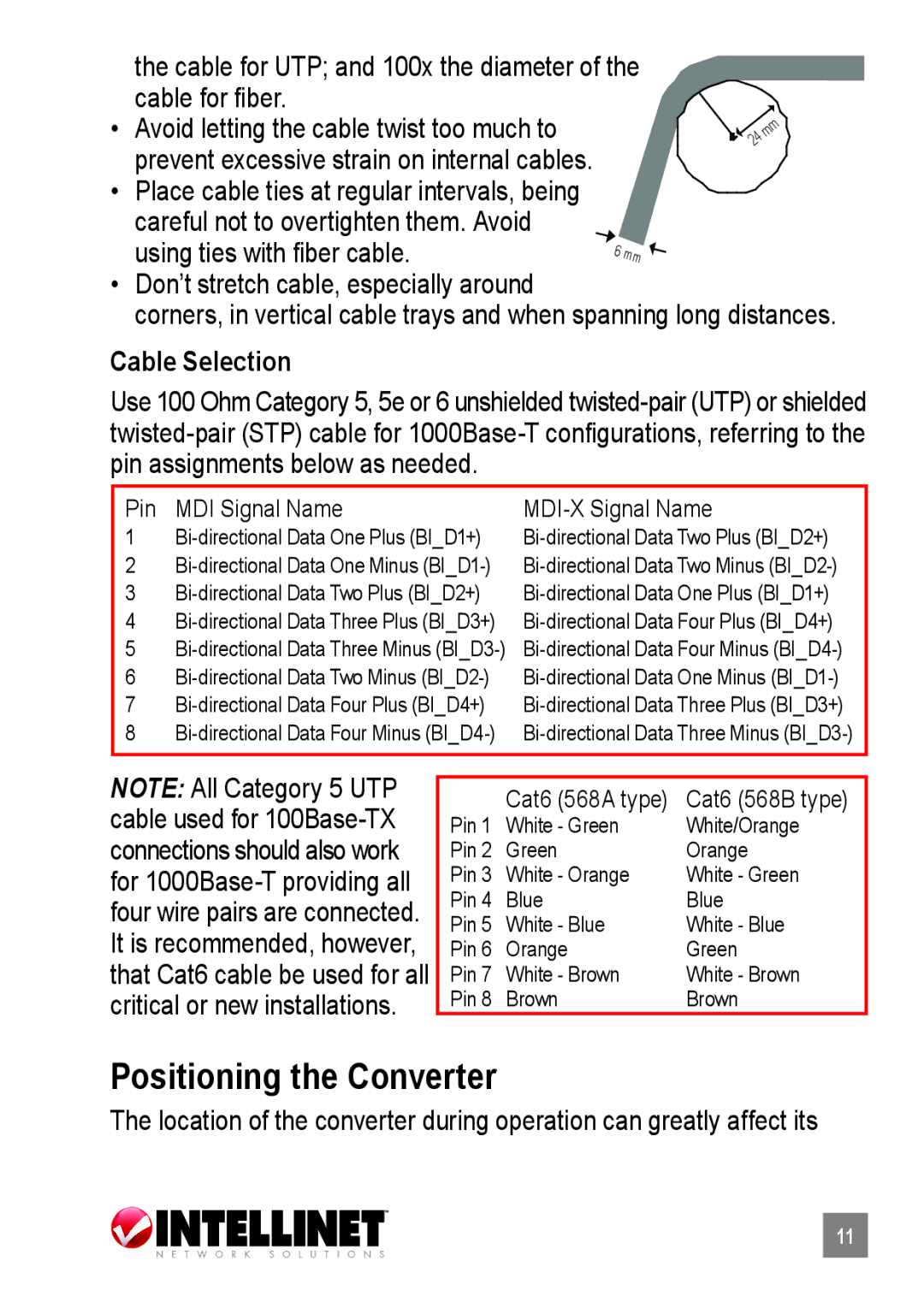mm 24
the cable for UTP; and 100x the diameter of the cable for fiber.
• Avoid letting the cable twist too much to prevent excessive strain on internal cables.
•Place cable ties at regular intervals, being 



 careful not to overtighten them. Avoid
careful not to overtighten them. Avoid
using ties with fiber cable. 6 mm
6 mm 
•Don’t stretch cable, especially around
corners, in vertical cable trays and when spanning long distances.
Cable Selection
Use 100 Ohm Category 5, 5e or 6 unshielded twisted-pair (UTP) or shielded twisted-pair (STP) cable for 1000Base-T configurations, referring to the pin assignments below as needed.
Pin | MDI Signal Name | MDI-X Signal Name |
1 | Bi-directional Data One Plus (BI_D1+) | Bi-directional Data Two Plus (BI_D2+) |
2 | Bi-directional Data One Minus (BI_D1-) | Bi-directional Data Two Minus (BI_D2-) |
3 | Bi-directional Data Two Plus (BI_D2+) | Bi-directional Data One Plus (BI_D1+) |
4 | Bi-directional Data Three Plus (BI_D3+) | Bi-directional Data Four Plus (BI_D4+) |
5 | Bi-directional Data Three Minus (BI_D3-) | Bi-directional Data Four Minus (BI_D4-) |
6 | Bi-directional Data Two Minus (BI_D2-) | Bi-directional Data One Minus (BI_D1-) |
7 | Bi-directional Data Four Plus (BI_D4+) | Bi-directional Data Three Plus (BI_D3+) |
8 | Bi-directional Data Four Minus (BI_D4-) | Bi-directional Data Three Minus (BI_D3-) |
| | |
NOTE: All Category 5 UTP cable used for 100Base-TX connections should also work for 1000Base-T providing all four wire pairs are connected. It is recommended, however, that Cat6 cable be used for all critical or new installations.
| Cat6 (568A type) | Cat6 (568B type) |
Pin 1 | White - Green | White/Orange |
Pin 2 | Green | Orange |
Pin 3 | White - Orange | White - Green |
Pin 4 | Blue | Blue |
Pin 5 | White - Blue | White - Blue |
Pin 6 | Orange | Green |
Pin 7 | White - Brown | White - Brown |
Pin 8 | Brown | Brown |
Positioning the Converter
The location of the converter during operation can greatly affect its
11

![]()
![]()
![]()
![]()
![]() careful not to overtighten them. Avoid
careful not to overtighten them. Avoid![]() 6 mm
6 mm ![]()
